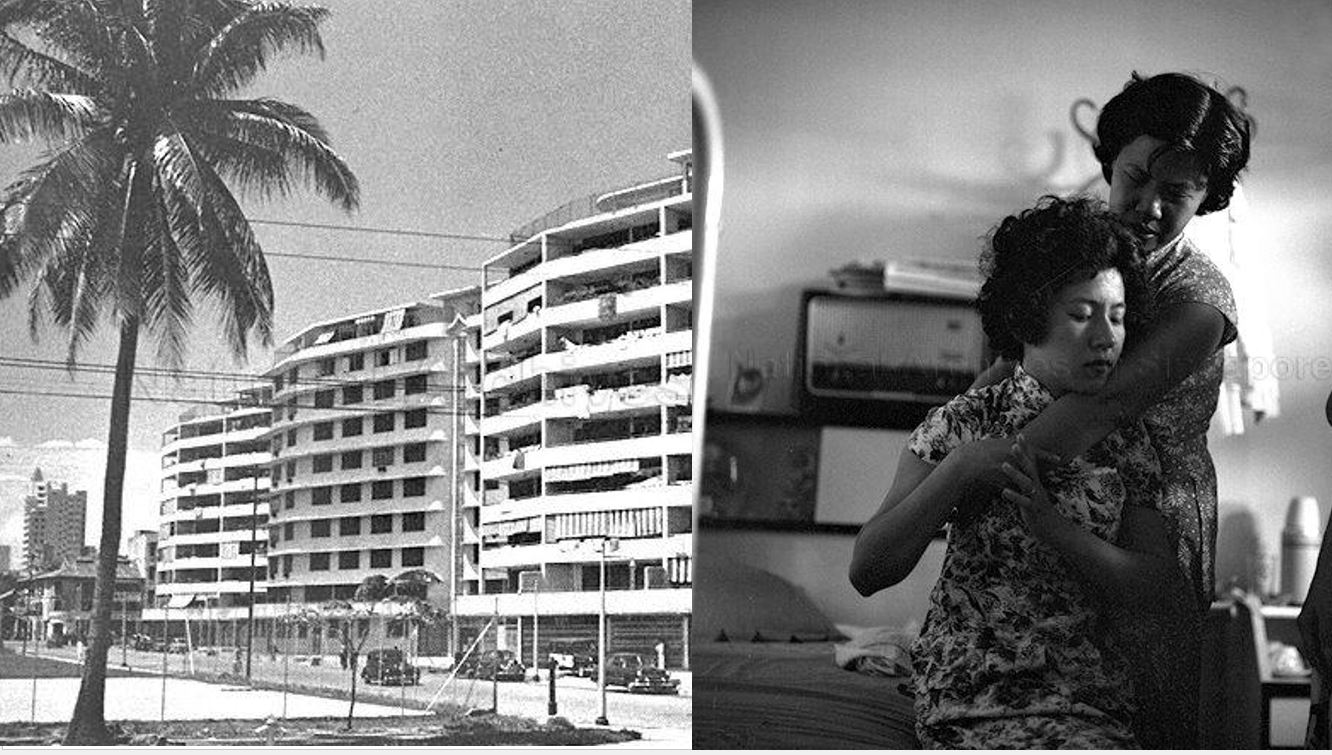Tall housing structures only began to dot the Singapore skyline from the 1950s.
And a strange phenomenon no one foresaw then was that these newly-constructed high-rise buildings began attracting people to jump off and kill themselves there.
Blocks of flats at Upper Pickering Street saw about 20 deaths recorded, which resulted in solutions being formulated to curb the problem.
Before the Housing & Development Board
Before 1959, the Singapore Improvement Trust (SIT) was entrusted with the task of housing development.
Even though many of the SIT flats had fewer than 10 storeys, they were considered tall for Singapore at that time, especially those constructed in the 1950s.
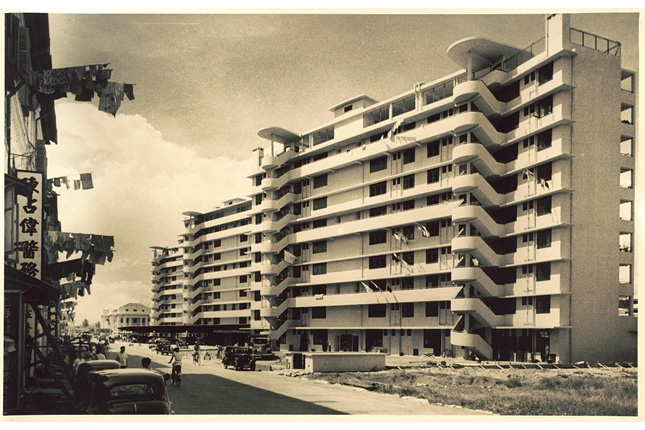 Photo from National Museum of Singapore, via Roots.sg
Photo from National Museum of Singapore, via Roots.sg
Suicide flats
In land-scarce Singapore, building upwards was one way to accommodate developments.
Yet, an unintended and unfortunate consequence was that constructing high-rise buildings gave people a place to jump from.
Before the 1950s, the building of choice was Nam Tin Building, or Great Southern Hotel, in the Chinatown area. It was six storeys high.
When three blocks of nine-storey SIT flats were constructed in 1952 and 1953, they soon became known as "suicide flats".
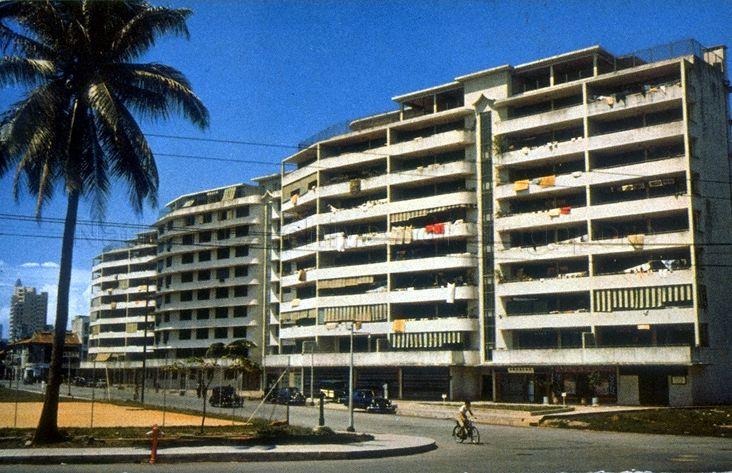 Photo from NAS.
Photo from NAS.
Also located in Chinatown
Located at Upper Pickering Street, the SIT flats faced Hong Lim Park and the Criminal, District & Magistrates’ Courts.
 Criminal, District & Magistrates’ Courts, 1950s. Photo from State Courts
Criminal, District & Magistrates’ Courts, 1950s. Photo from State Courts
Typical of SIT flats during that time, the walk-up flats had a facade with a distinctively curved form.
This style was characteristic of the streamline moderne style, a late development of the art deco movement in the 1920s and 1930s.
 Photo from NAS.
Photo from NAS.
Preventing the climbing death toll
According to the National Archives, as many as 20 people lost their lives by committing suicide at these flats. Many threw themselves off the external spiral staircase or balcony.
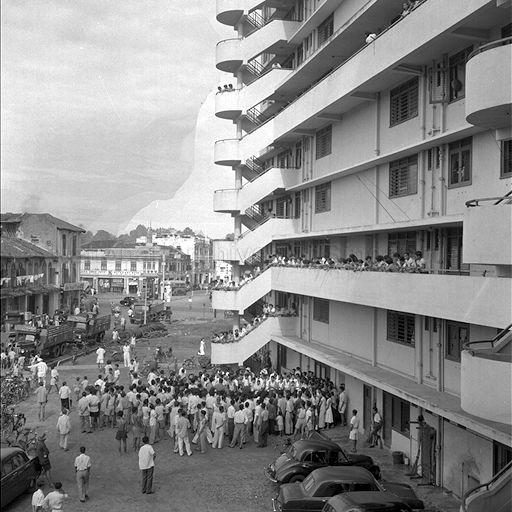 Photo from NAS.
Photo from NAS.
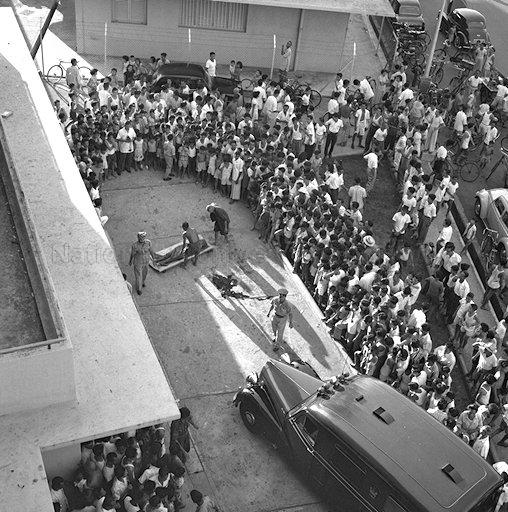 Photo from NAS.
Photo from NAS.
The suicides were so rampant that there were discussions over how future occurrences could be prevented.
One suggestion was to have "vigilant jagas" to guard every landing, but this was unfeasible as the watchmen "would have to be supermen to tell a suicide from a tenant."
Another suggestion was to seal off the fire escape, but this made it impossible for the fire brigade to get ladders mounted in the event of an emergency.
Desperate to stem the suicides, the City Councillors even considered a ghost-layer's proposal to rid the suicide flats of an evil ghost in 1955.
The ghost-layer claimed that the evil spirit required a "quota of lives", presumably met because of the suicides, and would take its revenge on the block's dwellers once the suicides stopped.
[related_story]
Eventual decline in suicides
Among all the measures discussed, the most effective one involved barricades and fencing.
The suicides declined after the late 1950s when barbed-wire barricades were erected on the staircases. Mesh fencing also enclosed back balconies and exits.
According to an article in 1955, dogs owned by top-storey residents were also partly responsible for the decrease in suicides:
"Each time a stranger climbs the stairs to the balcony the dogs bark and alert the tenants. Half a dozen heads pop out of the windows to inquire."
Most of the SIT flats are considered low-rise by today's standards.
They are no longer in existence as they have been demolished in order to accommodate new developments.
By 2005, the Upper Pickering Street flats were brought down, making way for Parkroyal on Pickering hotel.
The iconic building has become the new face of Upper Pickering Street.
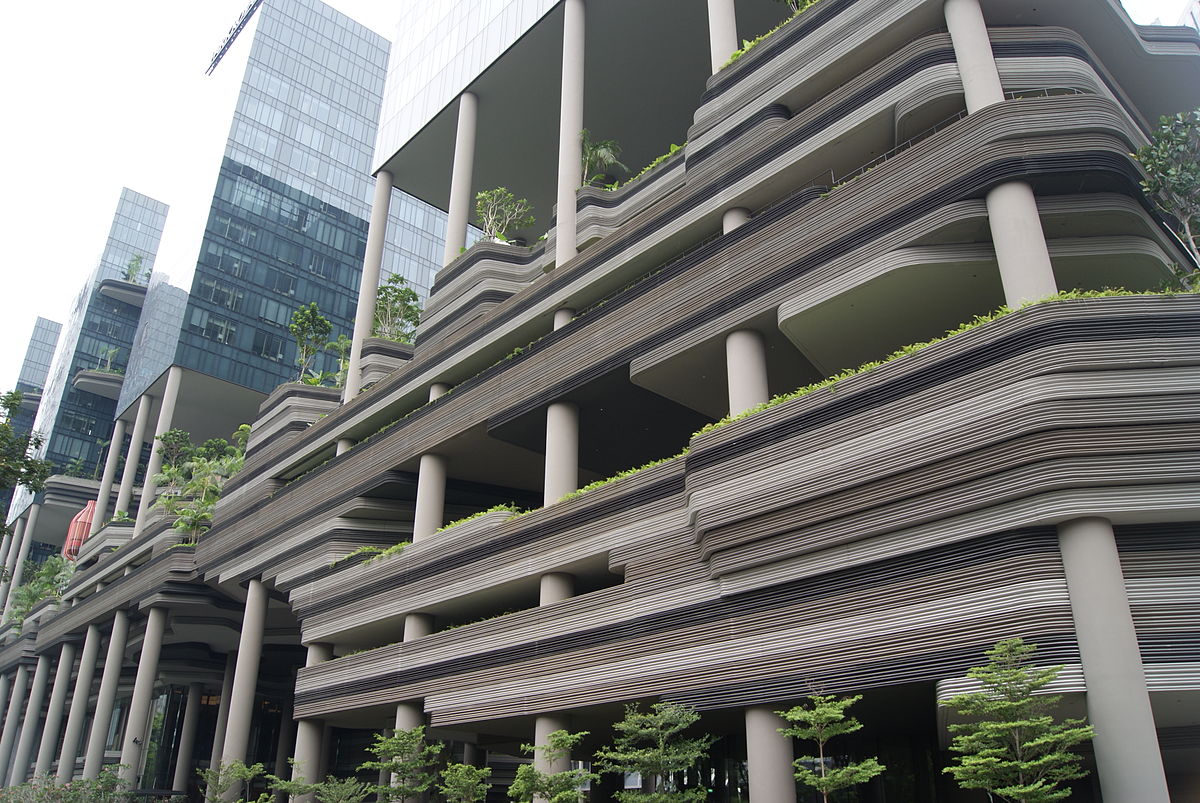 Photo from Wikimedia Commons.
Photo from Wikimedia Commons.
Here are unrelated articles you should check out next:
You need to get with the times, both for your bank account and your life
If you like what you read, follow us on Facebook, Instagram, Twitter and Telegram to get the latest updates.
